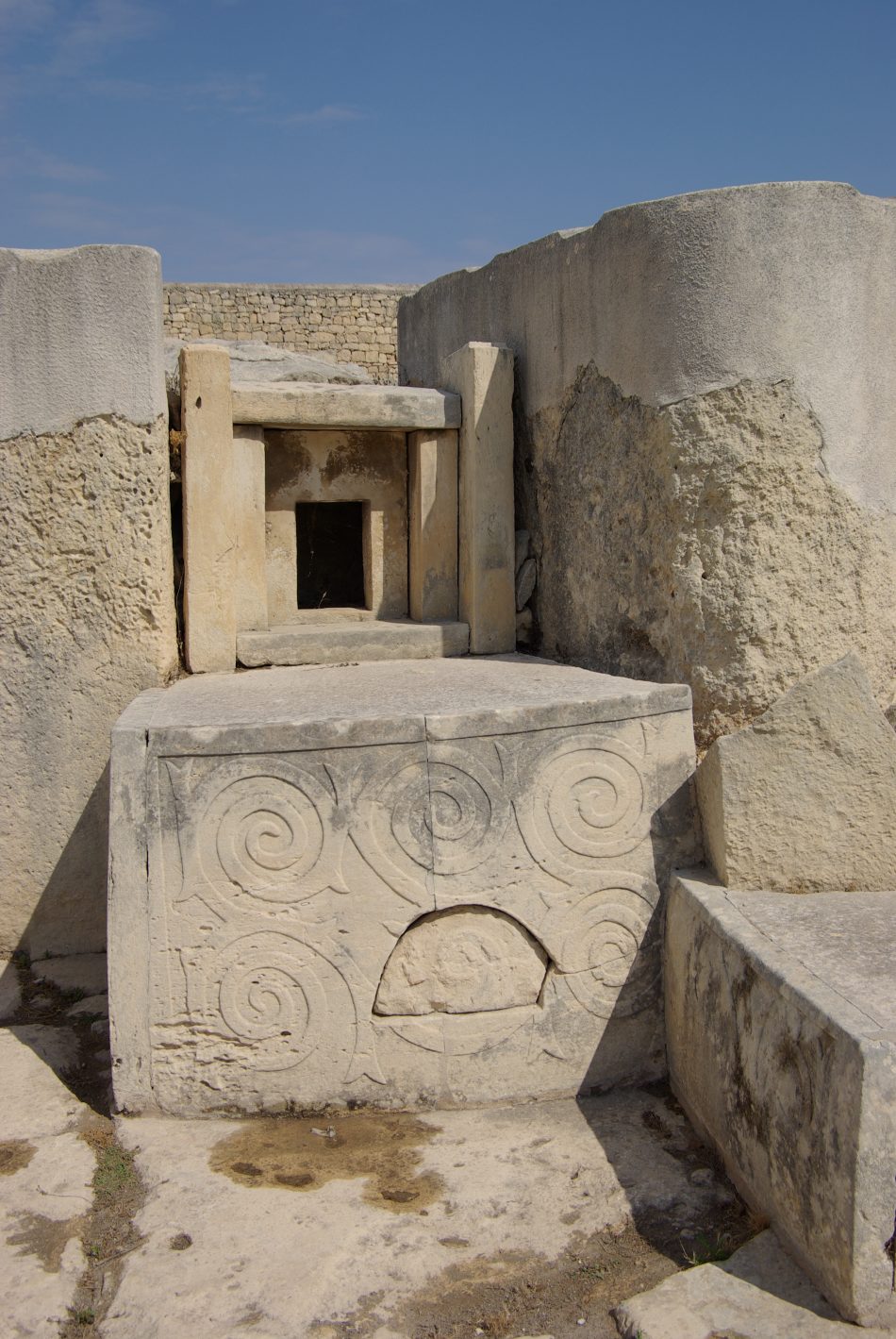Malta, Tarxien temples, altar. This is a copy, the original is in the National Museum of Archaeologie in Valetta. CC BY-SA 3.0 via Wikipedia.
According to “Tarxien Temple” (PDF). National Inventory of the Cultural Property of the Maltese Islands. 30 March 2012.
Identified by local farmers whilst ploughing the land in the early 1900’s, Tarxien Temples is one of the most splendid examples of prehistoric architecture in the islands. Investigated by Sir Themistocles Zammit by the 1915, parts of the western complex were exposed. During works a Bronze Age cremation cemetery was also identified within the temple. Further excavations between 1918 and 1929 exposed other areas of the prehistoric remains. In 1948, restoration works were carried out. Investigation also followed in 1950 and again between 1957 and 1963. During this period the temple was also heavily restored with concrete giving the complex its’ current looks. Dated back to approximately 2800 BC, Tarxien complex consist of three separate, but attached, temple structures. The first temple is dated to approximately 3100 BC and is the most elaborately decorated of the temples of Malta. The middle temple has been dated to about 3000 BC and is unique example having three pairs of apses instead of the usual two. The east temple is dated at around 3100 BC. The remains of another temple, smaller, and older, having been dated to 3250 BC, are visible further towards the east. Tarxien offers a rich and intricate spectrum of stonework, which includes depictions of animals including a relief of a bull and a sow, altars, and megaliths decorated with spiral designs and other patterns. The site was acknowledged as a UNESCO World Heritage Site in 1980.
I thought the altar was similar to the head of this:





